Phoenix Technologies Ltd
Phoenix were a BIOS manufacturer during the early PC / DOS era. They started back in 1979 and were headquartered in Silicon Valley (Milpitas, CA).
The company merged with Award Software in 1997??
They separated out their BIOSes based on platform:
- PhoenixBIOS™ and AwardBIOS™ for desktop computers
- ServerBIOS™ for servers
- NoteBIOS™ for portable computers
- PhoenixPico BIOS for information appliances
Phoenix 80386 ROM BIOS v3.06 (1986)
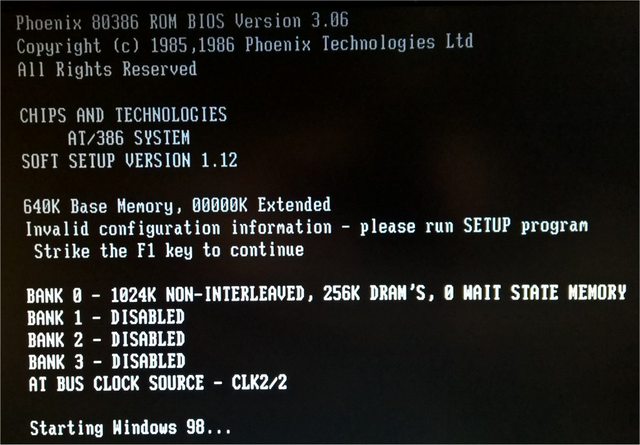
Press Ctrl-Alt-Insert to enter BIOS configuration.
Phoenix 80386 ROM BIOS v4.02 02 (198x)
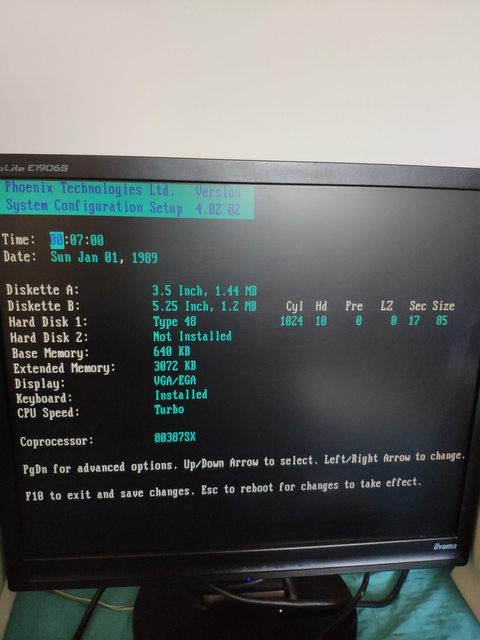
Phoenix 80386 ROM BIOS v3.06 (1986)
PhoenixBIOS A486 v1.01 (1992)
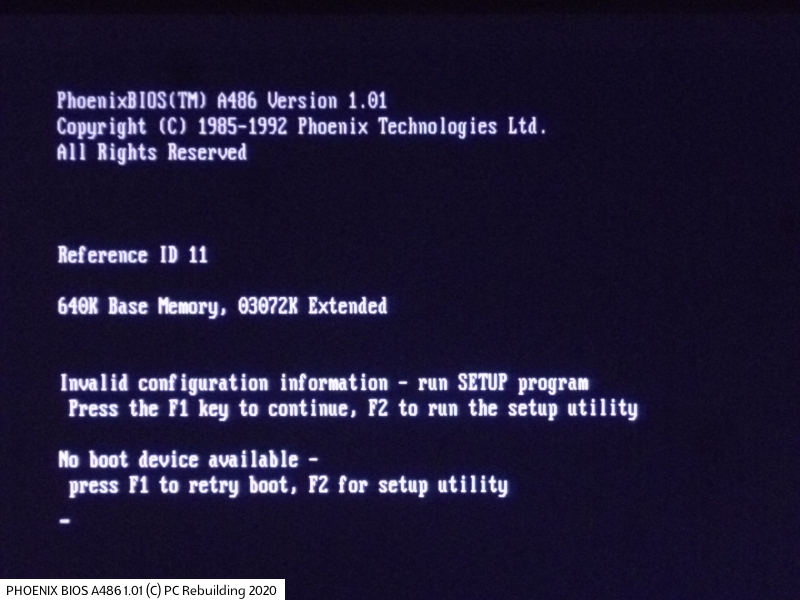
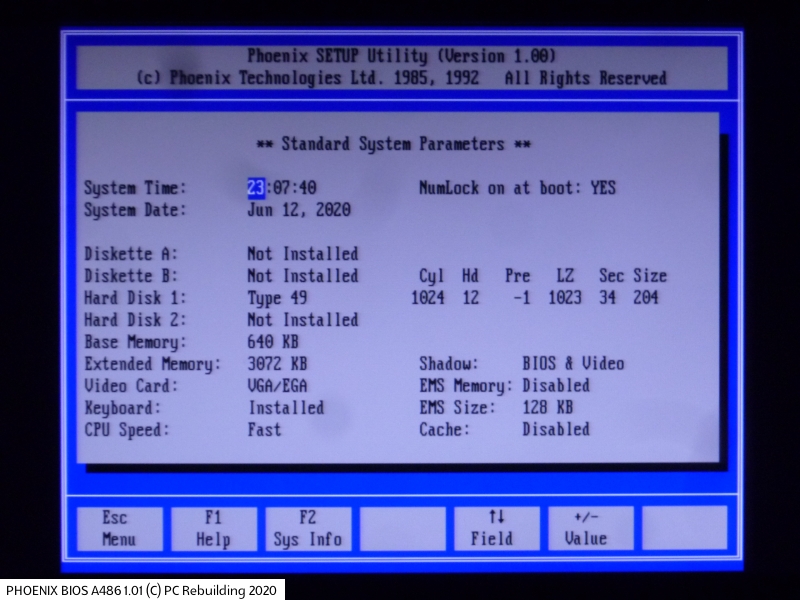
PhoenixBIOS A486 v1.03 (1992)

PhoenixBIOS 4.05 (1996)
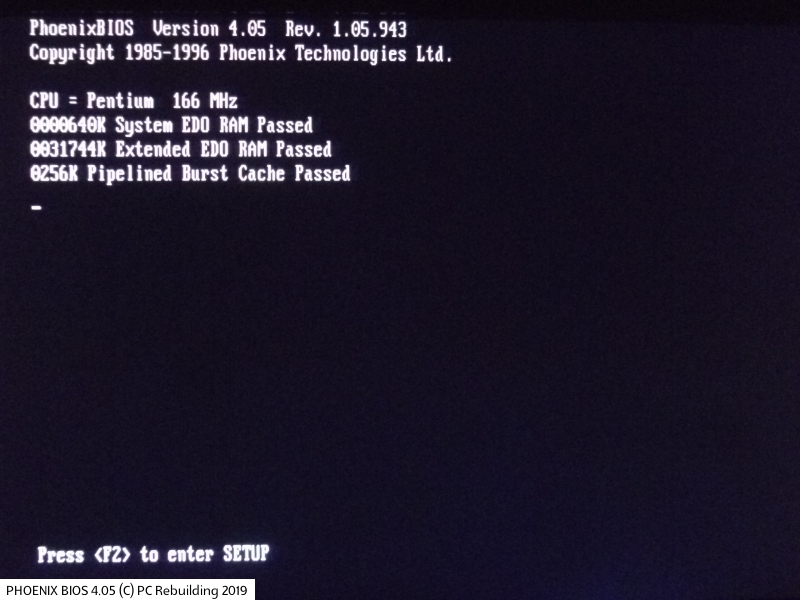
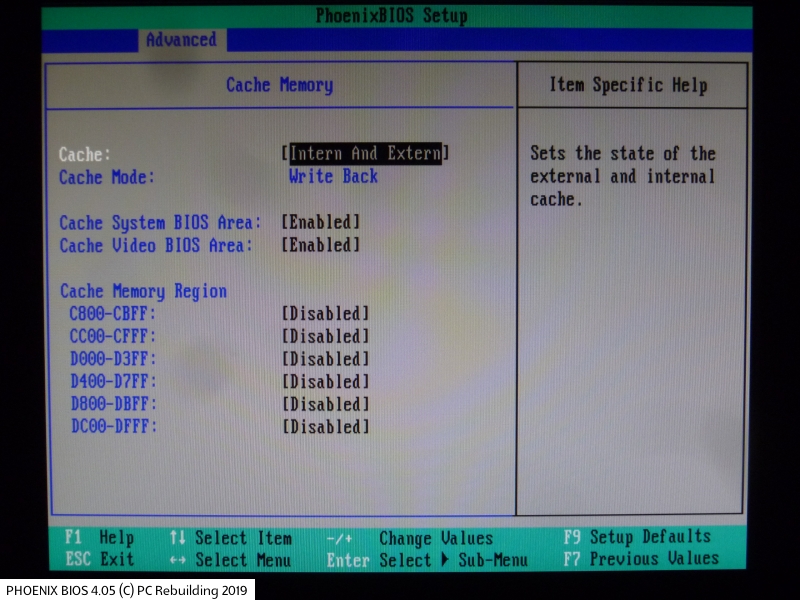
PhoenixBIOS 4.0 Release 6.0 (pre-2000)
Includes support for ACPI, USB, IEEE-1394 (Firewire), Plug & Play, power management and AGP. The BIOS also includes utilities like QuickBoot, PhDisk, and SaveToDisk
To enter the BIOS setup, press F2 on boot.
If you cannot contact your computer's supplier, you may be able to obtain assistance or an updated system BIOS from your computer's motherboard manufacturer. For AwardBIOS-equipped systems, a BIOS identification number can be used for this purpose.
This identification number is part of the BIOS ID string, displayed at the bottom-left corner of the screen during startup. On most AwardBIOS-equipped systems, you can press the Pause key during the memory test to suspend the startup process and allow more time to copy the ID string. The string should be similar to the example below. Digits 6-7 identify the motherboard manufacturer using the table below.
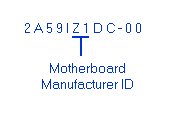
| ID Number | Manufacturer |
a0 |
asustek |
a1 |
abit |
a2 |
atrend |
a3 |
bcom |
a8 |
adcom |
ab |
acer-open |
ad |
anson |
ak |
aaeon |
ak |
advantech |
am |
acme |
ax |
achitec |
b0 |
biostar |
b2 |
boser |
c3 |
chaintech |
d0 |
dataexpert |
d1 |
dtk |
d4 |
dfi |
d7 |
daewoo |
dj |
darter |
e1 |
ecs |
e3 |
efa |
ec |
enpc |
europe |
awdeup |
f0 |
fic |
f1 |
flytech |
f2 |
flexus |
f3 |
full-yes |
f8 |
formosa |
f8 |
formosa |
f9 |
redfox |
g0 |
giga-byte |
g3 |
gemlight |
g5 |
gvc |
g9 |
global |
ga |
giantec |
i3 |
iwill |
i9 |
icp |
ic |
inventec |
ie |
itri |
j1 |
jetway |
j3 |
jbond |
k1 |
kaimei |
kf |
kinpo |
l1 |
luckstar |
l7 |
lanner |
l7 |
lanner |
l9 |
luckytiger |
m2 |
mycomp |
m3 |
mitac |
m4 |
micrtstar |
m8 |
mustek |
mh |
macrotek |
n0 |
nexcom |
o0 |
icean |
p6 |
protech |
p8 |
proteam |
pa |
epox |
pn |
procomp |
ps |
palmax |
pxxxx |
pionix |
q0 |
quanta |
q0 |
quanta |
q1 |
qdi |
r0 |
rise |
r9 |
rsaptek |
s2 |
soyo |
s5 |
shuttle |
sa |
seanix |
se |
smt |
se |
smt |
sh |
sye |
sm |
superpower |
sn |
soltek |
sw |
s&d |
t4 |
taken |
t5 |
tyan |
tg |
tekram |
tj |
totem |
tp |
commate |
u1 |
usi |
u2 |
uhc |
u3 |
umax |
u4 |
unicorn |
v3 |
pc-partner |
v5 |
vision |
w0 |
win |
w5 |
winco |
w7 |
winlan |
w7 |
win-lan |
x5 |
arima |
y2 |
yamashita |
z1 |
zida |
PhoenixBIOS 4.0 Release 6.0.4 (1998)
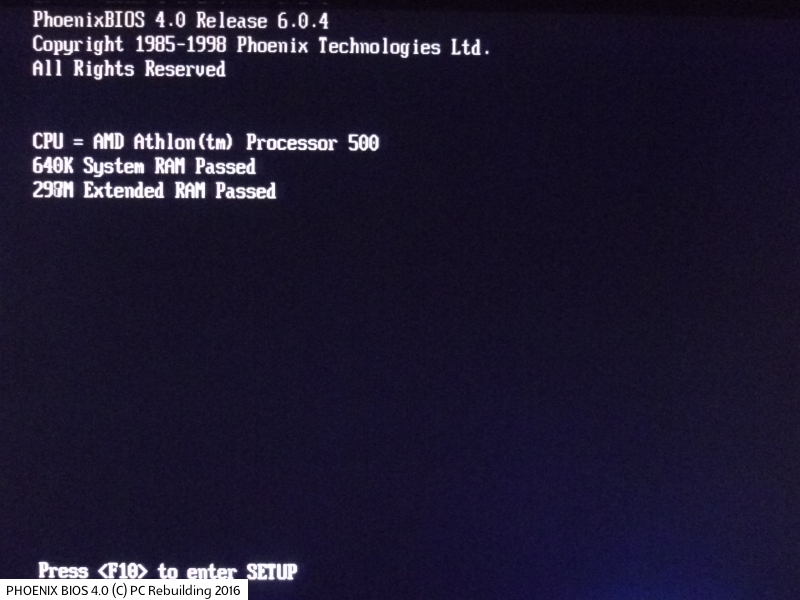
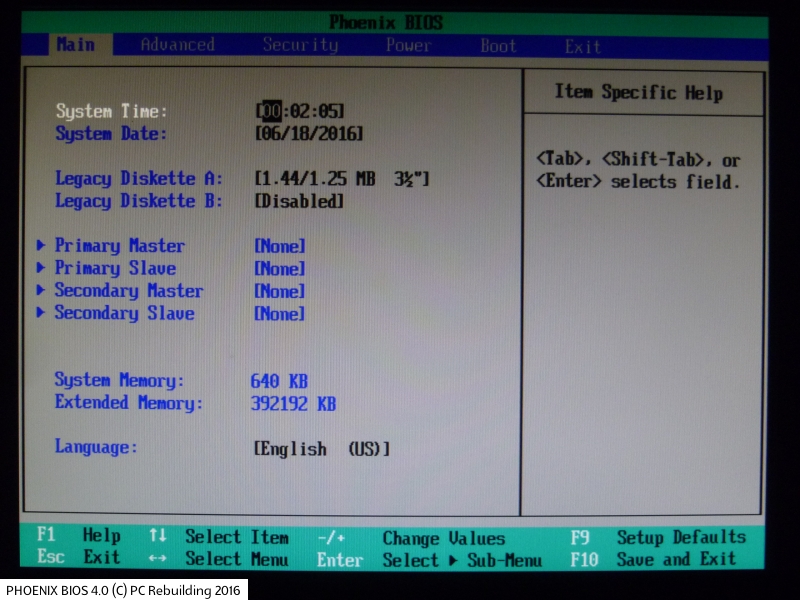
PhoenixBIOS 4.06 (2001)
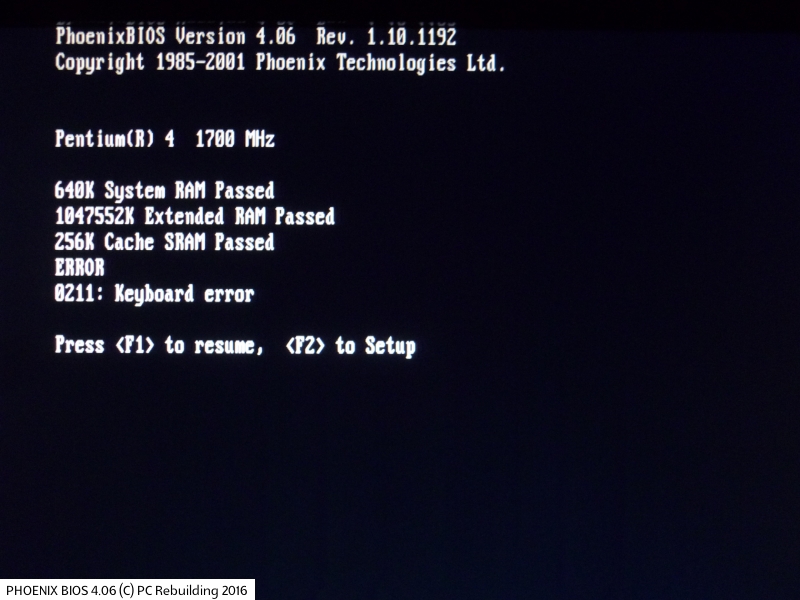
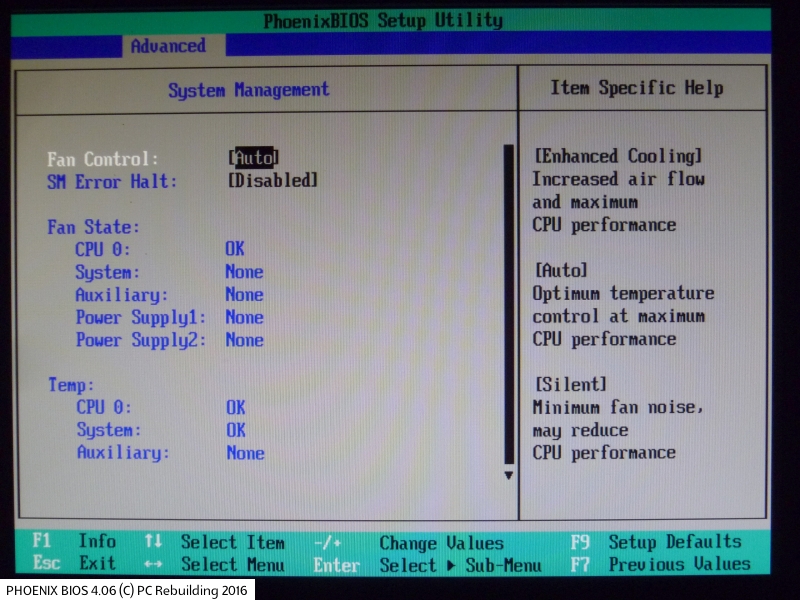
Known revisions: 1.06.1064, 1.10.1192
PhoenixBIOS 4.0 Release 6.1 (March 1998)
Launched in March 1998, PhoenixBIOS 4.0, Release 6.1 was the latest version of PhoenixBIOS 4.0. It included several new features including enhanced boot flexibility, a graphical SETUP, and expanded configuration capabilities. Release 6.1 also includes features that ensure increased deployment flexibility and reduce user support costs. It supports USB, UMA, PCI and For more details, please refer to the press release.
- ACPI - ACPI combines Power Management and Plug & Play functionality.
- PHLASH - Phoenix Phlash copies BIOS images into flash ROMS on AT-compatible systems.
- Plug & Play 4.3 - Enhances configurability and allocates resources automatically for devices without requiring the user to struggle with complicated settings and jumpers.
- USB - the Universal Serial Bus (USB) is a medium-speed bus extension to the PC architecture that focuses on Computer Telephony Integration (CTI) and consumer and productivity applications.
- 1394 -1394 support is an interconnect standard for all platform configurations. 1394 and USB have no interdependencies and can be installed separately in whatever combination the OEM desires.
- Keyboard Controllers- A high-performance code base, the desktop MultiKey™ keyboard controller (KBC) architecture supports both AT and PS/2 environments and offers OEMs utilities that provide maximum flexibility.
D686 BIOS (1998)

Phoenix FirstBIOS Notebook Pro Version 2.0 for IBM ThinkPad (2003)
Phoenix FirstBIOS Desktop Pro 2.0 (2004)

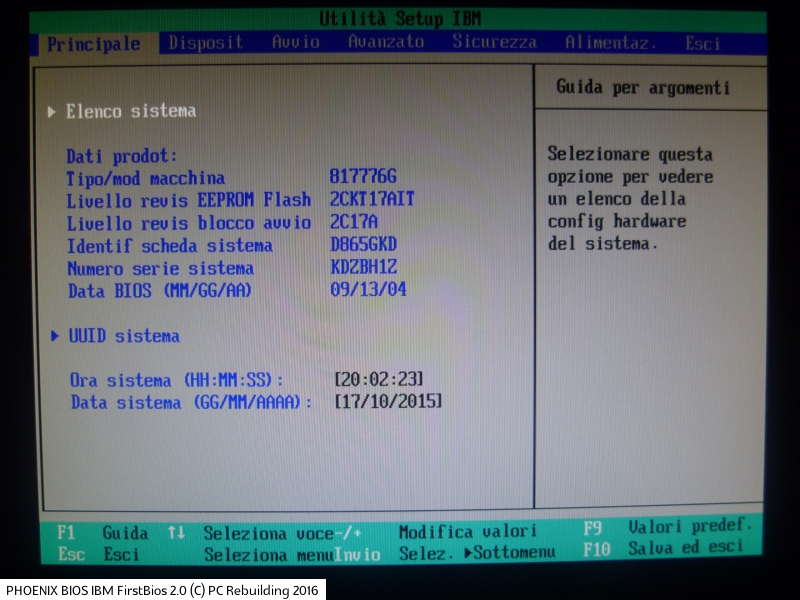
Acer, Dell, and Hewlett-Packard all tended to base their BIOS on a Phoenix BIOS.
Flashing a Phoenix BIOS
Phoenix Technologies created a utility called Phlash 4.0 Release 1.82 that could be used to flash older Phoenix BIOSes. It took a .rom file as the new BIOS file. Also for DOS, Phlash16 1.7.0.41 took a .wph file as the new BIOS file. For Windows, they had WinPhlash 1.7.44.0 (Win32) and WinPhlash64 1.0.76 (Win64), both of which also take a .wph file.
Phoenix Phlash is a FLASH utility that offers flexibility, adaptability, and supportability. Phoenix Phlash is compatible with Phoenix BIOSes. To support a multitude of platforms and configurations, Phoenix Phlash supports platforms with either a single-flash ROM part or multiple-flash ROMs. A DOS executable file, PHLASH.EXE includes
- A user interface
- Platform-independent portions of code to program a flash device
Utilities
Freeware Utilities
NVRAM.EXE is a utility which uses the Plug and Play BIOS interface to read, write, and parse ESCD data from either the systems ESCD NVRAM storage area, or, from files. PNPBTST.EXE is a utility that connects to the Plug and Play BIOS interface and allows the user to perform and test Plug and Play BIOS functions. PNPOPROM.EXE is a DOS utility that displays information about the Option ROMs (Adapter Cards) installed on your computer. It also displays the Plug-and-Play header information of cards that happen to be Plug-and-Play. |